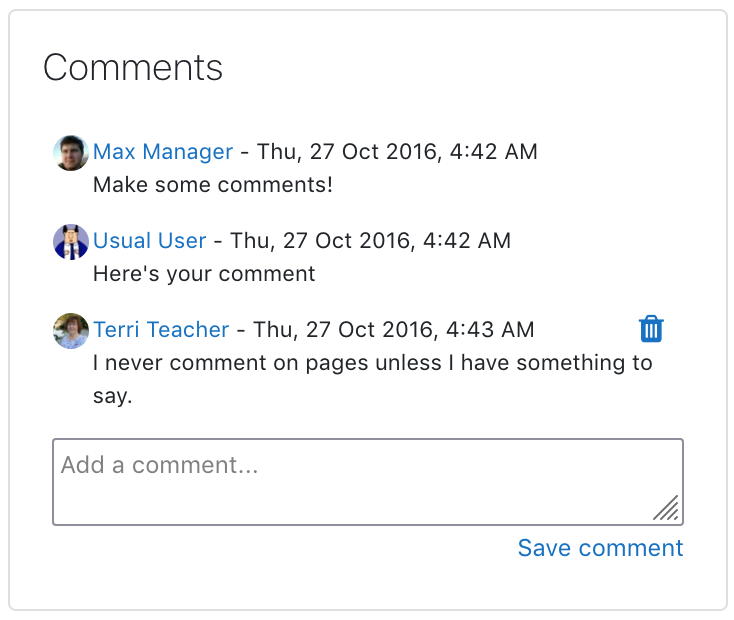Comments: Difference between revisions
From MoodleDocs
Helen Foster (talk | contribs) |
Helen Foster (talk | contribs) (more features template, Comments FAQ) |
||
| Line 1: | Line 1: | ||
A [[Comments block|comments block]] can be added to any page in Moodle, enabling users to easily add comments. A similar interface enables comments to be added to glossary, database activity and blog entries. | {{More features}} | ||
A [[Comments block|comments block]] can be added to any page in Moodle, enabling users to easily add comments. A similar interface enables comments to be added to glossary, database activity and blog entries. The comments interface uses AJAX so that comments are added instantly without needing a page refresh. | |||
[[Image:Comments block.png]] | [[Image:Comments block.png]] | ||
==Enabling comments== | |||
Comments can be disabled/enabled by an administrator in ''Settings > Site administration > Advanced features''. | |||
==Blog comments== | ==Blog comments== | ||
| Line 15: | Line 18: | ||
==See also== | ==See also== | ||
*[[Comments FAQ]] | |||
* MDL-23605 (Dis)allowing users to create Comments block on their profile | * MDL-23605 (Dis)allowing users to create Comments block on their profile | ||
Revision as of 07:01, 19 October 2011
A comments block can be added to any page in Moodle, enabling users to easily add comments. A similar interface enables comments to be added to glossary, database activity and blog entries. The comments interface uses AJAX so that comments are added instantly without needing a page refresh.
Enabling comments
Comments can be disabled/enabled by an administrator in Settings > Site administration > Advanced features.
Blog comments
Blog comments are enabled by default. The feature may be disabled in Site administration > Appearance > Blog.
Comments report
A list of all comments added may be found in Site administration > Reports > Comments.
See also
- Comments FAQ
- MDL-23605 (Dis)allowing users to create Comments block on their profile
